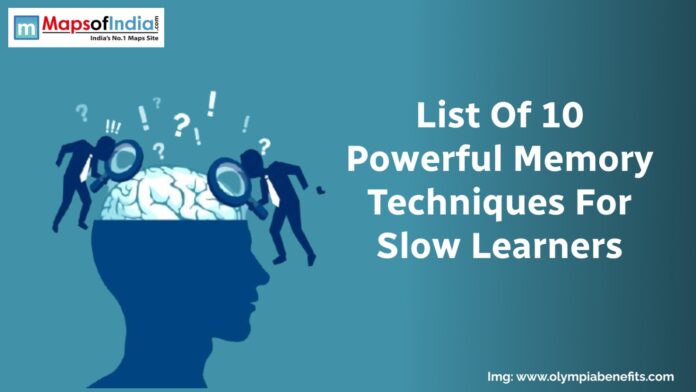It is a hard road for the slow learner who needs to work long and hard to learn something. However, one can overcome this by using memory techniques in Japan, a country with a high-quality education system. These techniques (which have their foundations in traditional or modern learning methodologies) are all about improving retention, comprehension, and recall. Slow learners can drastically increase the cognitive process and make learning more fun using these methods!
Japanese memory techniques are also tailored to hundreds of unique learning styles, making it an approach that works well for individuals who have difficulty mastering the arts of studying in more traditional ways. These visual, structured, or interactive forms of repetition provide a new strategy for mastering material. This article will discuss ten straightforward Japanese memory tips that can significantly help slow learners improve their memory and learning process.
Kanban Method for Task Organisation
The Kanban method is popular in Japanese companies and education. It is a tool for organising visually, breaking tasks into bite-sized pieces and tracking tasks via a board-style interface divided into labelled sections such as “To Do,” “In Progress,” and “Completed.”
How It Helps Slow Learners:
- Encourages step-by-step learning
- Provides visual clarity of progress
- Reduces overwhelm by focusing on smaller tasks
By organising study materials into manageable sections, slow learners can stay focused and gradually master complex subjects.
The Shichida Method – Image-Based Memory Learning
The Shichida Method is a right-brain training approach that emphasises memory improvement through images, stories and sensory events, developed by Dr. Makoto Shichida. This method is beneficial for children and slow learners as it helps them retain better with the help of visual memory.
How It Helps Slow Learners:
- Uses pictorial representation for better recall
- Strengthens brain connections through visualisation
- Engages learners through multisensory techniques
Flashcards illustrated stories and sensory-based activities could significantly boost memory in learners who struggle with traditional rote memorisation.
Chunking Method for Breaking Down Information
Chunking is the process of taming, dividing, and breaking down information into smaller chunks. This approach is also heavily used in Japanese education, especially for memorising Kanji and vocabulary.
How It Helps Slow Learners:
- Reduces cognitive load
- Enhances understanding through structured learning
- Improves long-term retention
This is much like memorising a sequence of numbers (e.g., 123-456-789 instead of 123456789) by splitting it into smaller pieces to ease recollection.
Kumon Method: Repetitive Learning for Mastery
Toru Kumon discovered the Kumon method, a self-learning technique emphasising repetitive practice and gradual progression. Learners work on a concept repeatedly until they master it completely before progressing to the next level.
How It Helps Slow Learners:
- Builds confidence through repetition
- Reinforces learning through incremental difficulty
- Allows self-paced progression
Slow learners can use repetitive math, reading or writing exercises to build memory and subject mastery.
Mnemonic Storytelling for Concept Retention
Japanese students often use mnemonic storytelling to memorise difficult information. This technique involves creating stories or associations that link information to meaningful and familiar concepts.
How It Helps Slow Learners:
- Makes learning more engaging and relatable
- Enhances memory by creating strong associations
- Simplifies complex concepts
For instance, to remember historical dates, students might create a fun story linking numbers to familiar events or characters.
Shadowing Method for Language Learning
The shadowing method is one of the very famous techniques for learning a language in Japan. In it, you listen to a passage and then immediately repeat it word for word, trying to copy the speaker’s tone and pronunciation.
How It Helps Slow Learners:
- Improves listening and pronunciation skills
- Enhances recall through active engagement
- Strengthens cognitive processing speed
As such, it is especially beneficial to language learners who may have trouble remembering new information since it allows for repetition and imitation, which can greatly help with retention.
Mind Mapping for Better Understanding
Japanese students use it to map their thoughts and ideas visually. This technique is where the central idea is placed at the centre, and branches and keywords connect the associated ideas, more organised and easier to remember.
How It Helps Slow Learners:
- Provides a clear visual representation of complex ideas
- Encourages active learning through association
- Enhances recall by linking concepts together
In addition, using a coloured pen or images can help retain more information and get more engaged.
Pomodoro Technique for Focused Learning
Although it is Italian, pomodoro is used in Japan to improve concentration and productivity. The 25-minute session is referred to as Pomodoros, and it is characterised by a short shell-out between study sessions.
How It Helps Slow Learners:
- Prevents cognitive overload
- Encourages time management and discipline
- Enhances focus through structured learning intervals
Slow learners can improve concentration and avoid burnout by breaking study sessions into manageable periods.
Use of Kana and Kanji Memory Association
Japanese learners use association techniques to remember kana (phonetic characters) and kanji (complex symbols). They create memorable stories or connect characters with images to aid recall.
How It Helps Slow Learners:
- Uses visual cues to strengthen memory
- Enhances learning through creative association
- Makes abstract concepts more tangible
This method can be applied to other subjects by linking difficult concepts to relatable symbols or images.
Hifumi Technique – Number Memorisation Using Rhymes
The Hifumi technique is a traditional Japanese method for memorising numbers through rhythmic patterns and rhymes.
How It Helps Slow Learners:
- Uses rhythm to make memorisation fun and engaging
- Simplifies number retention through musical association
- Encourages auditory learning
Students use catchy phrases or songs to memorise long sequences of numbers, which aids recall and can even be made fun of.
Conclusion
Japanese memory techniques are practical, systematic and game-based approaches to learning. All these methods can especially aid slow learners who learn better through visualisation, repetition, or by making associations. Then, through using the Kanban method, Shichida visualisation, chunking, Kumon repetition, mnemonic storytelling, shadowing, mind mapping, Pomodoro timing, kana association, and Hifumi rhyming, learners can conquer memory challenges and retention abilities.
These tactics engage with the mind in an entirely new way, which can greatly improve cognitive abilities, allowing slow learners to remember better what is taught. Knowing how they learn best gives learners a tailored study strategy to help them reach their potential. With these methods, learners will progressively improve their academic performance and confidence in their learning and memory retention abilities.




